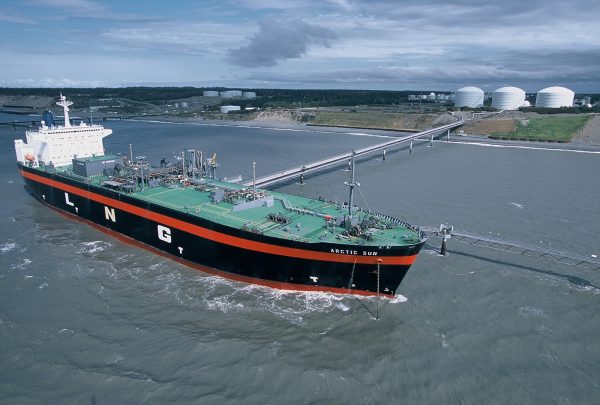
BP and ExxonMobil have committed up to $20 million to the state-run Alaska LNG project.
It’s the first time in years that private industry in the state has pitched in money to move the gasline project forward. Both companies, and ConocoPhillips, were investors in the project but backed out in 2016 citing unfavorable market conditions.
Lt. Gov. Kevin Meyer told a crowd at an oil and gas conference in Anchorage that the money will be used to get the project through the federal environmental review process. Meyer said Thursday that the two companies will also help the state determine whether the project can be more competitive.
“When the governor took office, he made it clear that we needed participants with the credentials and the resources necessary in order to make a project of this scope work. The involvement of BP and Exxon provides confidence that all future decisions regarding Alaska LNG will be rooted in world-class LNG experience,” Meyer said.
The Alaska LNG project would pipe natural gas from the North Slope to Nikiski, then transport it to Asian markets.
Damian Bilbao, Vice President of Commercial Ventures for BP in Alaska, said the company has at least one big reason to put money into the project.
“Alaska gas remains BP’s single largest global undeveloped resource,” he said.
Bilbao said it’s significant that industry and the state are collaborating on the project again.
He credits Gov. Mike Dunleavy’s administration with working to bring private industry back into the process of getting the state’s natural gas to market.
“The Governor talks about being open for business and big businesses like ExxonMobil and BP step forward when both the project and opportunity make sense but also when the right relationship exists with the sovereign,” Bilbao said.
Still, that doesn’t mean that the company believes the Alaska LNG project is more economically viable now than it was when BP stepped away from it.
“The state has made good progress over the last several years. And, working together with Exxon and AGDC we think we can unlock some additional opportunities. But we’ll just have to see in a few months — after some work gets done — where the project is relative to other opportunities around the world,” Bilbao said.
The state’s gasline corporation will have about $23.5 million in the bank at the end of the current fiscal year. But corporation spokesperson Jesse Carlstrom wrote in an email that it will likely cost about $30 million to get through the environmental review with the Federal Energy Regulatory Commission. If that process stays on schedule, the state could get the final federal go-ahead by 2020.
Still, the project needs final engineering and design work as well as investors and customers to be economically viable.
Rashah McChesney is a photojournalist turned radio journalist who has been telling stories in Alaska since 2012. Before joining Alaska's Energy Desk , she worked at Kenai's Peninsula Clarion and the Juneau bureau of the Associated Press. She is a graduate of Iowa State University's Greenlee Journalism School and has worked in public television, newspapers and now radio, all in the quest to become the Swiss Army knife of storytellers.




